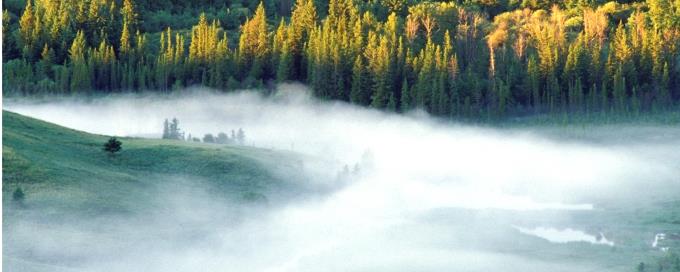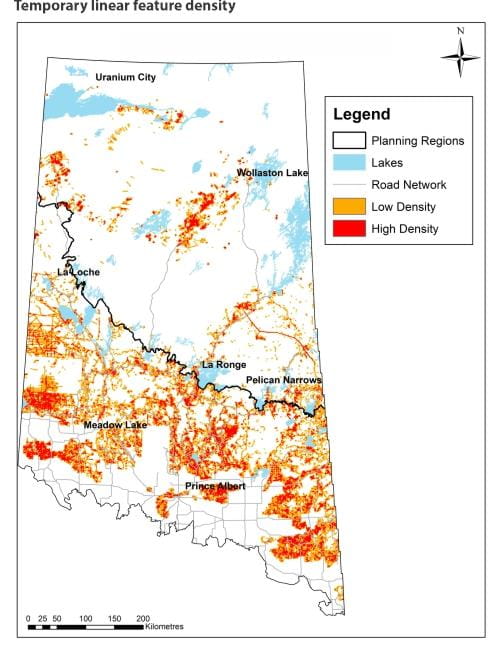
Why we measure this
An intact boreal forest ensures contiguous tracts of diverse habitat are available for boreal wildlife species and provides a massive store of carbon. The boreal forest is important for the forestry and mining sectors. At the same time, forest harvest practices that emulate the patterns of natural disturbance and minimize the footprint of development are critical. Prompt renewal after timber harvesting and active reclamation and restoration of disturbed habitat from mineral and other sectors will be necessary to ensure sustainable use of these landscapes.
As energy, mineral exploration, forest harvest and other activities expand in the boreal region, we can expect the associated network of human disturbance (e.g. seismic, geophysical lines, forest roads) to expand as well. These features can involve clearing forest cover along corridors or expansive areas, and may be used intermittently, temporarily or permanently. Site-level effects influence habitat suitability by altering behavioural responses among a broad array of forest-associated species. The temporary nature of human disturbance may imply lower ecological effects, but when effects are aggregated across broader landscapes, their impacts on biodiversity may be cumulative and substantial, especially where they occur in high densities.
What is happening


Temporary linear feature density - Total square kilometres containing low density (<1 km/km2) or high density (>1 km/km2) of temporary linear features with footprints that can be reclaimed to viable wildlife habitat.
What we are doing
Forest harvest is an important tool for managing forest health. The boreal forest has evolved with disturbance, particularly fire, and requires disturbance to maintain ecological health. Forestry companies are using natural forest harvest practices to emulate natural disturbance patterns. Other sectors, such as mining, are working to minimize their impact on the landscape by keeping exploration and development footprints to the minimum required to operate, and practicing active reclamation.
Saskatchewan's woodland caribou range planning is a significant cumulative impacts program, aiming to manage habitat for woodland caribou and other forest-dwelling species by reducing disturbance and fragmentation on the landscape. The program will document disturbance, prioritize reclamation, set standards for industry and designate areas of important habitat.
